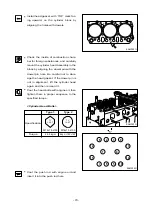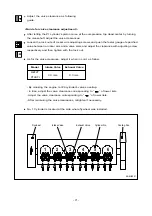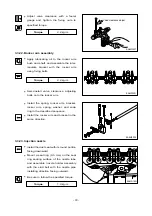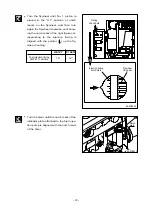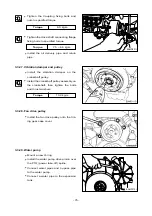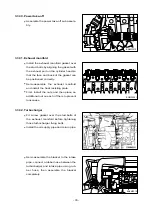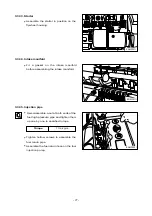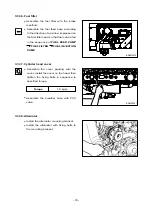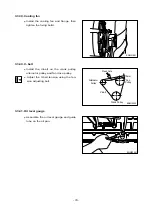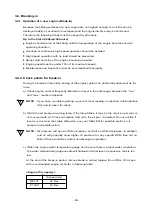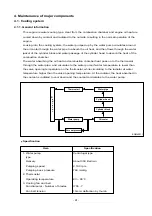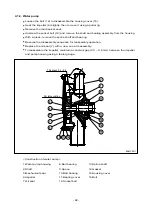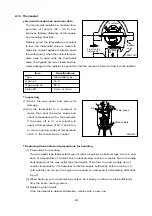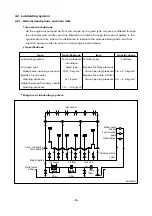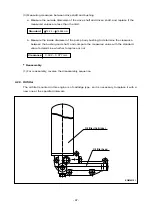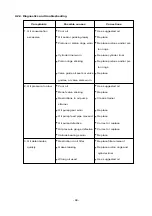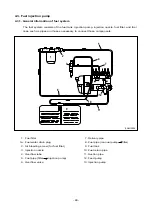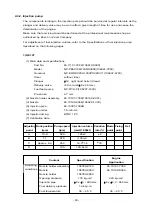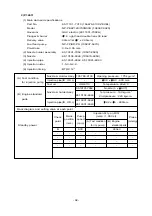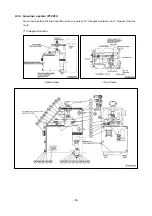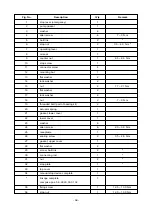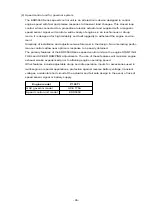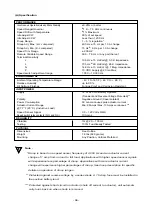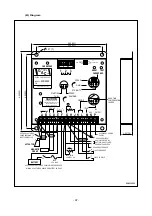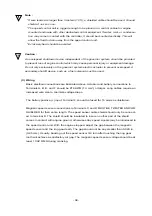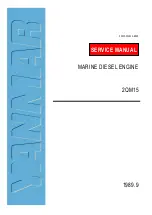
4.1.3. Thermostat
•
General descriptions and main data
The thermostat maintains a constant tem-
perature of coolant (90 ~ 95
˚
C) and
improves thermal efficiency of the engine
by preventing heat loss.
Namely, when the temperature of coolant
is low, the thermostat valve is closed to
make the coolant bypass to directly enter
the water pump; when the coolant temper-
ature rises to open wide the thermostat
valve, the bypass circuit is closed and the
water passage to the radiator is opened so that the coolant is forced to flow into the radiator.
•
Inspecting
(1) Check the wax pallet and spring for
damage.
(2) Put the thermostat in a container of
water, then heat the water slowly and
check temperature with a thermometer.
If the valve lift is 0.1 mm (starting to
open) at temperature of 83
˚
C and 8 mm
or more (opening wide) at temperature
of 95
˚
C, the thermostat is normal.
•
Replacing thermostat and precautions for handling
(1) Precautions for handling
The wax pallet type thermostat does not react as quickly as bellows type one to a vari-
ation of temperature of coolant. Such relatively slow reaction is mainly due to the large
heat capacity of the wax pellet type thermostat. Therefore, to avoid a sharp rise of
coolant temperature, it is essential to idle the engine sufficiently before running it. In
cold weather, do not run the engine at overload or overspeed it immediately after start-
ing off.
(2) When draining out or replenishing coolant, do it slowly so that air is bled sufficiently
from the entire cooling system.
(3) Replacing thermostat
If the thermostat is detected defective, retrace with a new one.
- 83 -
EAMC002I
To radiator
To bypass
tube
Bypass
valve
From cooling
water pump
EFM2055I
Bar
Temp. gauge
Wooden plate
Item
Specifications
Type
Wax-pallet type
Open at
83
˚
C
Open wide at
95
˚
C
Valve lift
8 mm or more


